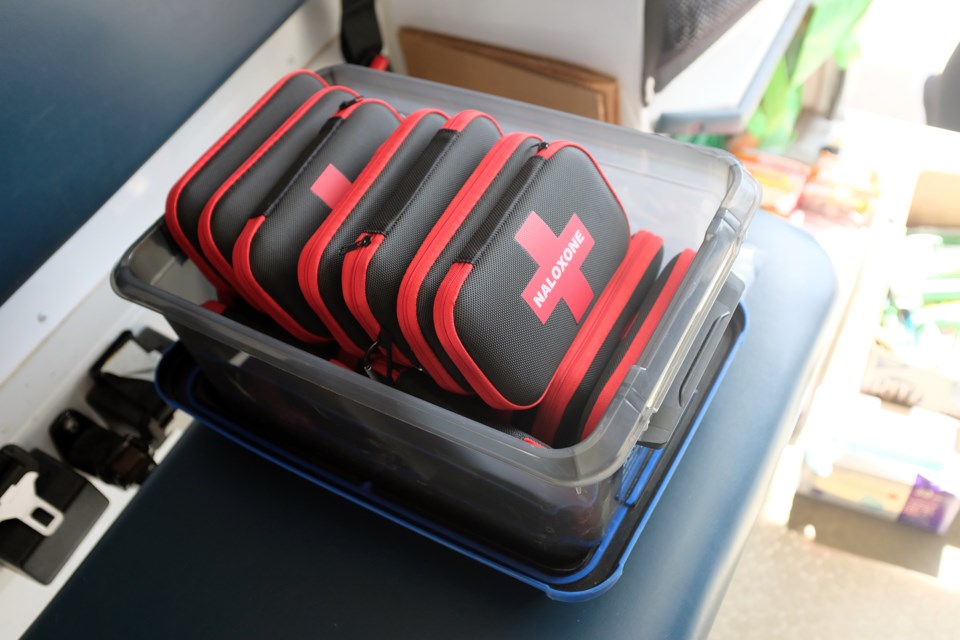Through recently enacted legislation, the provincial government is compelling more workplaces to take preventative action against overdoses and is providing free training and naloxone kits to eligible businesses.
Changes to the province’s Occupational Health and Safety Act (OHSA) were put in place on June 1, including the expansion of the Ontario Workplace Naloxone Program.
Initially, the province was targeting certain industries, like construction, to always have naloxone kits on hand because of higher-than-usual numbers of overdoses involving those workers. Now, the province has broadened the scope of the program to include any number of industries that fit the criteria.
An employer must comply with the OHSA requirements in the following three scenarios: if there is a risk of a worker opioid overdose, if there is a risk of a worker opioid overdose happening in the workplace where the worker performs work for the employer, or if the risk is posed by a worker who performs work for the employer.
Naloxone can temporarily reverse the effects of an opioid overdose caused by drugs like morphine, heroin, oxycodone and fentanyl, among others.
Employers who meet those three criteria must have a naloxone kit on hand at each workplace and have an employee trained to recognize signs of overdose and be on-hand to use it at all times.
“We are seeing a lot of people talking about this being an issue within their workplaces,” said Matthew Budau, OHSA advisor at Sault Ste. Marie-based Health & Safety Professionals Inc. (HSPI). “This isn’t targeted to any one industry, although it did start off with a focus on heavy industry and construction.”
HSPI is one of six training providers chosen by the province for Phase 2 of the provincial program, which provides free training for up to two workers at each eligible workplace.
“There is no cost to the employer and this is per workplace, so if you have an employer who owns multiple workplaces we are able to accept two workers for each of those workplaces, train them in what the law says, when do you need a kit, what should be in that kit, what does an overdose look like and how to respond to it when it happens,” said Budau.
There is no specific assessment protocol, said Budau. If a workplace deems it meets the criteria it can reach out to one of the approved providers for the training and separately receive free kits from the Red Cross and St. John Ambulance.
“It’s based off of the risk within a workplace,” he explained.
HSPI offers regularly scheduled distance learning, as well as asynchronous e-learning program a worker can take at any time. In some cases the company may also be able to do in-person learning.
People who use drugs in the workplace may be very good at hiding that use.
“It’s not the stereotypical picture you may have in your mind about who is using drugs, this could be someone beside you,” said Budau.
Workers who are trained will come back with an understanding of signs to look for in an overdose, how to use a naloxone kit and help their workplaces come into compliance with the new legislation.
“We see it very much as prevention here where we are not only impacting the person who is having the opioid overdose, we are also getting the message out there to try and decrease the stigma as to what is going on,” said Budau.
The province says workers who attempt to administer Naloxone in an emergency response to an opioid overdose but are unsuccessful are generally protected from liability under the Good Samaritan Act, 2001.
“This is really being ready and trying to prevent,” said Budau.
Eligible employers with more than one workplace are able to have two employees per location trained under the program.
Budau said, like First Aid training, naloxone training could potentially come in handy outside the workplace.
“If people are using drugs at any time it’s really important to have someone who has a Naloxone kit and knows how to respond if something happens,” he said.
The training may also be beneficial when someone uses a drug other than opioids due to contamination or simultaneous use of many different drugs.
“Previously it was believed people were using just opioids alone and that was causing these overdoses, now we are starting to see very high case of stimulant use at the same time,” said Budau. “Whether that is someone using at a different time or contamination of the stimulant, really it’s just such a complex issue right now.”
